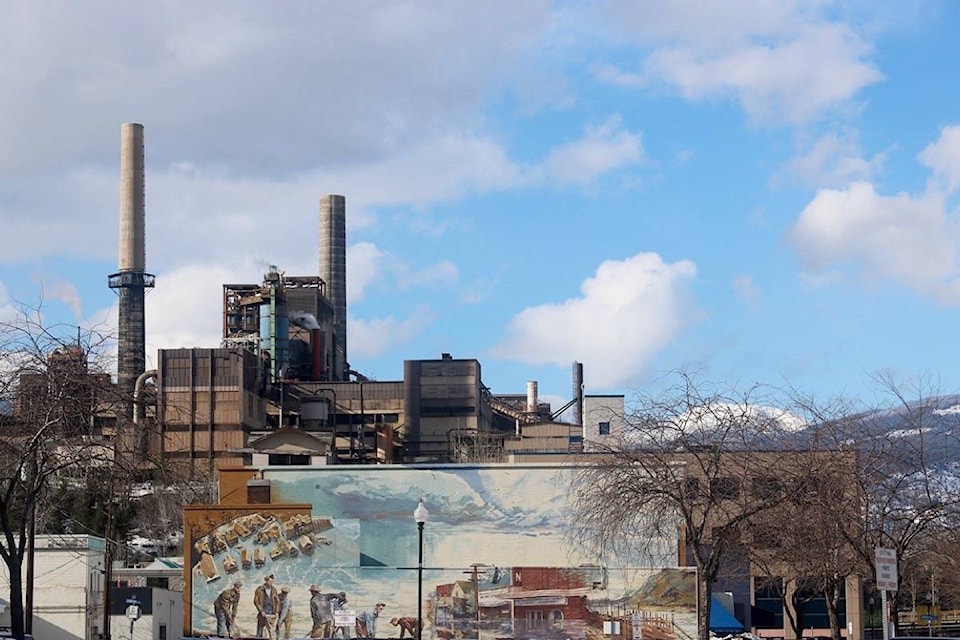Over $8 million has been invested in 32 building upgrades throughout Trail since the city created commercial tax exemption bylaws four years ago.
Essentially, both the downtown (includes East Trail and Rossland Avenue) and Class 6 incentive programs offer a 10-year tax break on properties under construction or substantial renovations valued at $10,000+ and $50,000+ respectively.
With the clock ticking - both revitalization-driven programs are coming to an end this year - the Trail Times asked acting mayor Lisa Pasin if council has looked at extending the bylaws.
”The uptake and feedback received from the applicants has been positive,” said Pasin. “Some of the applicants for the larger renovation projects weren’t even aware of the incentive programs and these particular projects would have happened regardless.”
The primary purpose of both revitalization tax exemption programs is to encourage private sector development or redevelopment, Pasin said.
“Such programs are commonly time limited in order to create an impetus for action on the part of the private property owners,” she added.
“No discussion on continuance has occurred as yet.”
When Jason Ayles moved his Trail Martial Arts studio up a block and renovated the new Cedar Avenue space, he took part in the downtown tax incentive program. Thus, his property assessment, at least in the city’s eyes, will remain the pre-renovation value for the next ten years.
Ayles, a realtor himself, has much insight on the tax-end of things. And, as Pasin pointed out, moving the business and subsequent building upgrades would have gone ahead, regardless.
“I think the program is a good idea,” Ayles began. “But the problem, in my opinion, is that commercial property isn’t based on emotion like residential property is… the B.C. housing bubble continued to rise and house prices increased, but that doesn’t happen in commercial real estate.”
He says commercial real estate assessments are based on how much rent is brought in and those numbers don’t fluctuate nearly as much as the residential market.
“Having my property taxes locked in is good in theory,” he explained. “But this year, my BC Assessment actually went down, so my property taxes actually dropped even lower than they would have been (through the program) … so even though I have this incentive for the next 10 years, it doesn’t really do anything for me.”
One aspect of the program, a 50 per cent reduction in building permit fees, did save Ayles some cash.
“Because permits are scaled and based on how much money you’re spending,“ he said. ”So honestly, the best part for me was the half price building permit.”
In the end, having commercial property values locked in is a good back up, but Ayles doesn’t see the market changing exponentially anytime soon.
“The chances of that happening in commercial real estate are considerably limited,” he said. “Because it’s something that’s driven per square-foot and not by emotion, and that’s been pretty flat for a long time, especially in this area.”
While private sector upgrades, big and small, have been quietly underway, the city has been creating stimulus with its own significant investments.
Council’s plate has been full with multi-million dollar revitalization projects the past few years including; the Skywalk in 2015/2016, current construction at the Trail Regional Airport and Riverfront Centre, and the Trail All Wheel Skatepark build next year.
“The city is very busy with two major construction projects at this time … the $4.2 million airport terminal and the $8.2 million library/museum,” Pasin said.
“These projects support economic development for our entire region as well as revitalization of our community. Council will be commencing budget discussions in early 2018 to finalize priorities for the 2018 fiscal year.”
To date, 27 downtown projects with a estimated construction value of $4.2 million have taken part in the program as well as five Class 6 (business) renovations nearing $4 million in estimated construction.
The Downtown Revitalization Tax Incentive Program came into effect Sept. 2013; the Class 6 program was introduced the following year.
Both programs end Dec. 31.
